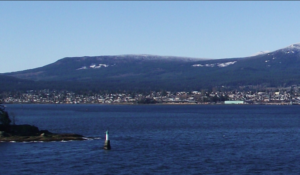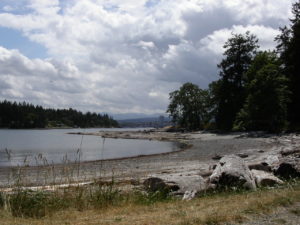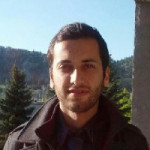Tutoring Programs
Private, In-Home Tutoring in Nanaimo, British Columbia
-
Certified Educators
-
Personalized Learning
-
1-on-1 Instruction
-
Flexible Scheduling
-
Bi-weekly Progress Reports
Nanaimo, British Columbia Tutoring Programs
Get started with SchoolTutoring Academy's tutoring programs for Nanaimo, British Columbia students.
Nanaimo District and Curriculum
 In Nanaimo the curriculum used has been developed by the province to set rigorous standards of learning for all students. These standards of learning represent the areas of knowledge a student must gain in order to master a subject. These standards are referred to as Prescribed Learning Outcomes (PLOs) and provide a way of organizing the objectives taught within and across subject areas. The province also approves alternate curricula that are used in the schools, as in the case of Advanced Placement and International Baccalaureate Programs. Students learn in an environment that stimulates critical thought and fosters independence in learning.
In Nanaimo the curriculum used has been developed by the province to set rigorous standards of learning for all students. These standards of learning represent the areas of knowledge a student must gain in order to master a subject. These standards are referred to as Prescribed Learning Outcomes (PLOs) and provide a way of organizing the objectives taught within and across subject areas. The province also approves alternate curricula that are used in the schools, as in the case of Advanced Placement and International Baccalaureate Programs. Students learn in an environment that stimulates critical thought and fosters independence in learning.
We currently cover the following Nanaimo-area school districts: School District 68, Catholic Diocese of Victoria.
Schools in Nanaimo include:
 Ecole Hammond Bay Elementary is located at 1025 Morningside Drive Nanaimo B.C., V9T 1N5. The Ministry of Education in British Columbia states the belief that each learner will discover their full capacity and contribute to the well-being of the province as a whole. The Ministry of Education Plan, from which the Hammond Bay plan is derived, has five key elements: Individualized learning for each student; High quality learning; Flexibility and choice; High standards; and Learning supported by technology. The Nanaimo-Ladysmith Public Schools Board of Education motto is: Success for All. “Nanaimo Ladysmith Public Schools, together with families and communities enable all students to become lifelong learners and productive, caring citizens by providing inclusive, challenging and engaging educational opportunities through the continuous improvement of instruction and supports for learning.” The Philosophy of Ecole Hammond Bay is the following, “We shall provide learning experiences in cooperation with the family and the community. We shall help children develop the skills and attitudes necessary for fulfillment as individuals and as responsible members of society.” They offer the following supporting statements, they pledge: To create an environment that promotes self-motivation and cooperation; To supply a caring, stimulating, and safe ecosystem that reflects individual classroom and school-wide goals; To carefully watch progress, and share it through regular communication between students, staff and parents/guardians; To encourage a progressive attitude toward lifelong learning; To guide students in acquiring a sense of self-discipline and the skills involved with decision making; To create and extend communication skills, such as listening, reading, speaking, and writing; To instill numeracy such that each child can apply their knowledge and problem solving in real life situations; To support an awareness of and a responsibility for the environment, as well as personal surroundings, to the world beyond to include social responsibility, tolerance of others who have different skin colours, customs, religions, languages, and values.
Ecole Hammond Bay Elementary is located at 1025 Morningside Drive Nanaimo B.C., V9T 1N5. The Ministry of Education in British Columbia states the belief that each learner will discover their full capacity and contribute to the well-being of the province as a whole. The Ministry of Education Plan, from which the Hammond Bay plan is derived, has five key elements: Individualized learning for each student; High quality learning; Flexibility and choice; High standards; and Learning supported by technology. The Nanaimo-Ladysmith Public Schools Board of Education motto is: Success for All. “Nanaimo Ladysmith Public Schools, together with families and communities enable all students to become lifelong learners and productive, caring citizens by providing inclusive, challenging and engaging educational opportunities through the continuous improvement of instruction and supports for learning.” The Philosophy of Ecole Hammond Bay is the following, “We shall provide learning experiences in cooperation with the family and the community. We shall help children develop the skills and attitudes necessary for fulfillment as individuals and as responsible members of society.” They offer the following supporting statements, they pledge: To create an environment that promotes self-motivation and cooperation; To supply a caring, stimulating, and safe ecosystem that reflects individual classroom and school-wide goals; To carefully watch progress, and share it through regular communication between students, staff and parents/guardians; To encourage a progressive attitude toward lifelong learning; To guide students in acquiring a sense of self-discipline and the skills involved with decision making; To create and extend communication skills, such as listening, reading, speaking, and writing; To instill numeracy such that each child can apply their knowledge and problem solving in real life situations; To support an awareness of and a responsibility for the environment, as well as personal surroundings, to the world beyond to include social responsibility, tolerance of others who have different skin colours, customs, religions, languages, and values.
 Dover Bay Secondary School is located at 6135 McGirr Road, Nanaimo, B.C., V9V 1S7. Dover Bay Secondary is a part of the Nanaimo School District and so shares the Ministry of Education goal of creating educated and thoughtful citizens. They are committed to the following: Intellectual Development: to instill in children the ability to think critically, to reason, and to analyze independently; to give students a lifelong ability to learn and continue development, instill a certain curiosity about the world, and an ability to think and express oneself creatively. Emotional and Social Development: to bestow upon students a sense of improved self-worth and create initiative, as well as an understanding of the importance of physical and mental health and well being, and an appreciation and understanding of the place of fine arts among a STEM-filled world; to give the students an appreciation of cultural heritage of others, a sense of responsibility socially, and tolerance and respect for the beliefs and ideas of others, even those we may not get along with. Career Development: to abet students in developing effective and sustainable work habits, including the ability to deal with ever-changing surroundings, and to enable students to chase their dreams in a responsible and achievable manner.
Dover Bay Secondary School is located at 6135 McGirr Road, Nanaimo, B.C., V9V 1S7. Dover Bay Secondary is a part of the Nanaimo School District and so shares the Ministry of Education goal of creating educated and thoughtful citizens. They are committed to the following: Intellectual Development: to instill in children the ability to think critically, to reason, and to analyze independently; to give students a lifelong ability to learn and continue development, instill a certain curiosity about the world, and an ability to think and express oneself creatively. Emotional and Social Development: to bestow upon students a sense of improved self-worth and create initiative, as well as an understanding of the importance of physical and mental health and well being, and an appreciation and understanding of the place of fine arts among a STEM-filled world; to give the students an appreciation of cultural heritage of others, a sense of responsibility socially, and tolerance and respect for the beliefs and ideas of others, even those we may not get along with. Career Development: to abet students in developing effective and sustainable work habits, including the ability to deal with ever-changing surroundings, and to enable students to chase their dreams in a responsible and achievable manner.
 Nanaimo District Secondary School is located at 355 Wakesiah Avenue Nanaimo, V9R 3K5. At NDSS, “[their] school provides learning opportunities enabling students and staff to achieve personal excellence and pursue their passions in an inclusive, supportive, and respectful environment. We educate students by teaching skills and modeling attitudes needed to become successful lifelong learners and responsible, caring school and global citizens. Our school honours dignity, purpose, and options for all.” Furthermore, they believe that the personality, society, and success of a school depends on how they define their purpose, develop it, and reflect on the successes and failures. Since education is a team effort, all members of the community must become included in the process of defining the long and short term goals. They must be dedicated to the collective goal of making this a reality. Additionally, each student is valued as a unique individual, and therefore should be of an equal value. They view learning and developing as the lifelong process that it is, requiring the active participation and care of the student, as well as a support network of teaching staff and parents/guardians. They hold the students, teachers, support staff, and parents as accountable for their commitment to each student’s learning.
Nanaimo District Secondary School is located at 355 Wakesiah Avenue Nanaimo, V9R 3K5. At NDSS, “[their] school provides learning opportunities enabling students and staff to achieve personal excellence and pursue their passions in an inclusive, supportive, and respectful environment. We educate students by teaching skills and modeling attitudes needed to become successful lifelong learners and responsible, caring school and global citizens. Our school honours dignity, purpose, and options for all.” Furthermore, they believe that the personality, society, and success of a school depends on how they define their purpose, develop it, and reflect on the successes and failures. Since education is a team effort, all members of the community must become included in the process of defining the long and short term goals. They must be dedicated to the collective goal of making this a reality. Additionally, each student is valued as a unique individual, and therefore should be of an equal value. They view learning and developing as the lifelong process that it is, requiring the active participation and care of the student, as well as a support network of teaching staff and parents/guardians. They hold the students, teachers, support staff, and parents as accountable for their commitment to each student’s learning.
Educating Our Parents: Understanding the Nanaimo District Curriculum
In English language arts, the reading curriculum provides learning expectations for reading both fiction and non-fiction and specifies the types of analysis and interpretation students should be able to do. When reading literary stories, students learn to correctly identify who is telling the story at different points in a text. A familiarity with basic parts of a story is acquired as well, including an understanding of the purpose of an introduction, body and conclusion. In non-fiction studies, the study of point of view includes issues of authorial bias or intent.
The writing portion of the English language arts curriculum requires that students learn how to write for a number of different purposes ranging from creative to expository to persuasive. Students work with one another to offer their critiques of readings, building consensus for how an author supports his or her perspective well, or how the author needs additional evidence to support their claims. To get a clearer picture of author bias, students examine the works of multiple authors on a single subject and explain how one’s perspective can impact one’s writing.
Our Nanaimo, British Columbia tutoring programs are personalized just for you
Our instructors hail from Harvard, Stanford, Duke and other top institutions
British Columbia Tutors
See additional British Columbia tutors.
Keeping Informed: Recent Nanaimo Educational News
- Jazz Academy - The District is offering an enrichment program for students who have a keen interest in performing jazz music. This program is offered to students in grades 11 and 12 at Wellington Secondary School.
- Social Media Initiative - Students now can use Erase Bullying, which is a social media site, to combat the problems of bullying. The issue of bullying has become a hot button topic in school and students across the district and nation have confronted the challenge head-on through a variety of initiatives. This website offers an anonymous way to deal with a bullying situation.
- District-wide Green Initiatives - School District 68 has developed a carbon-neutral action plan to affect a community wide effort at carbon reduction to the eventual point of operating on a carbon-neutral basis. The whole community can access the district website to learn more about how this plan may be accomplished.
Nanaimo Tutors Can Help Your Student Succeed
SchoolTutoring Academy works with young learners and students, all the way up through high school. We offer Pre-K and Kindergarten Tutoring as well as Elementary School Tutoring to build a strong learning foundation early on. We also offer comprehensive tutoring across all school subjects.
About Nanaimo, British Columbia
 Nanaimo is a city in the province of British Columbia; Nanaimo is relatively small, covering an area of 99.3 km2 . Nanaimo has a population of 90,504. Nanaimo is known as the “Harbour City”, and previously, the “Hub City,” due to its old layout where streets radiated out from the shoreline like the spokes of a wheel. Nanaimo gets its name from the tribe of Indigenous peoples that lived there, called the Snuneymuxw, of which Nanaimo is an anglicised spelling and pronunciation.
Nanaimo is a city in the province of British Columbia; Nanaimo is relatively small, covering an area of 99.3 km2 . Nanaimo has a population of 90,504. Nanaimo is known as the “Harbour City”, and previously, the “Hub City,” due to its old layout where streets radiated out from the shoreline like the spokes of a wheel. Nanaimo gets its name from the tribe of Indigenous peoples that lived there, called the Snuneymuxw, of which Nanaimo is an anglicised spelling and pronunciation.
The 2011 Canadian Census reported that Nanaimo had a population of 83,810, a 6.5% increase since 2006. The size of the city’s land area is 91.30 km², making the population density 918.0 people per km². The average age of a Nanaimoite is 44.8 years old, higher than the national median at 40.6. The average number of people occupying one dwelling in the city is 2.3 people. In Nanaimo, there are 38,800 private dwellings, 36,204 which are occupied by usual residents (93.3% occupancy rate). The median value of these dwellings are $348,460, which is a fair-bit higher than the national median at $280,552.
 Harbourfront Walkway
Harbourfront Walkway
The Harbourfront Walkway runs along the downtown waterfront and Newcastle Channel, and it is considered “multi-use”. The paths vary in their width, and also crosses different types of land, owned by different authorities. The section in question is under the dominion of the City of Nanaimo. The path is, notably, wheelchair accessible. Go for a long walk along the scenic Harbourfront Walkway, a prime waterfront trail that encapsulates the soul of the city. As you walk, keep an eye open for local fisherfolk out on the docks casting their lines, or others testing their luck by catching crabs. Stop by the market to pick up some fresh fruit and veggies, and walk among the local buskers and street-side vendors. Drop into a café on the pier and try some of the one of a kind tasty seafood, while you watch as seaplanes periodically come in and take off out on the water. The walkway features a delightful mix that is sufficient for both locals and tourists alike, offering a peaceful ambience with an ocean breeze. For more information, please visit their website located here.
 Saysutshun Newcastle Island
Saysutshun Newcastle Island
Saysutshun has always been a special place, with its memory and spirit living in the hearts of Snuneymuxw people. Before Europeans ventured this far west, the Snuneymuxw peoples lived on the island during the periods of late winter and early spring in order to make special use of the herring run. The island also serves as a source of traditional plant-based natural medicines and herbs. Both the island and its byproducts are associated with physical and spiritual healing by the indigenous peoples. Upon the occasion someone in the community passes, those close to them would go to Saysutshun to yu’thuy’thut to heal their spirit, mend their broken heart, and let go of their tears. A wide assortment of changes have come to pass over the island during the past hundred years. In the middle of the 19th century, industrial coal mining began operating here, causing the abandonment of the Coast Salish. The island has since acted as a shipyard, a sandstone quarry, a fish salting plant, and a leisure retreat for those with the means. Presently, it is run as a protected marine park, conservation area, and event destination run by the Snuneymuxw people. A stroll around the island truly takes you back through time; you might find some of the hidden treasures from the island’s past incarnations, if you only were to take the time to look. For more information, please visit their website here.
Interesting Facts
- Nanaimo is home to three fascinating wreck dives, the HMCS Saskatchewan, HMCS Cape Breton, and the RivTow Lion were all sunk off the coast of Nanaimo for divers to explore. Nanaimo has the world’s largest upright artificial reef.
- Nanaimo is home to Canada’s only floating pub: The Dinghy Dock Pub & Restaurant.
- The Nanaimo bar is named after the city.
- Nanaimo is also the home of the Great International World Championship Bathtub Race.
- One of the top ten island destinations in the world, right up there with Maui and the Great Barrier Reef (according to Travel & Leisure Magazine).
Chalk Talk: How Districts Handle School Cancellations
 Superintendents generally make most of the decisions with regards to when to call delays or cancellations and often inform parents through phone calls or text messages, news outlets, and their websites and online school cancellation services. Public school superintendents frequently follow the leads of other area school districts when deciding to delay or cancel school. School districts may build in some extra days to the schedule so that days do not have to be made up when school is closed. Otherwise, days may either be added on to the end of the year, or students may have to attend school on days they weren't originally supposed to, such as on President's Day or a day during spring break (off-days on major holidays won't be affected). In terms of students leaving school early when bad weather is on the horizon, this is often impractical, as parents of younger students may not be home to care for them.
Superintendents generally make most of the decisions with regards to when to call delays or cancellations and often inform parents through phone calls or text messages, news outlets, and their websites and online school cancellation services. Public school superintendents frequently follow the leads of other area school districts when deciding to delay or cancel school. School districts may build in some extra days to the schedule so that days do not have to be made up when school is closed. Otherwise, days may either be added on to the end of the year, or students may have to attend school on days they weren't originally supposed to, such as on President's Day or a day during spring break (off-days on major holidays won't be affected). In terms of students leaving school early when bad weather is on the horizon, this is often impractical, as parents of younger students may not be home to care for them.




